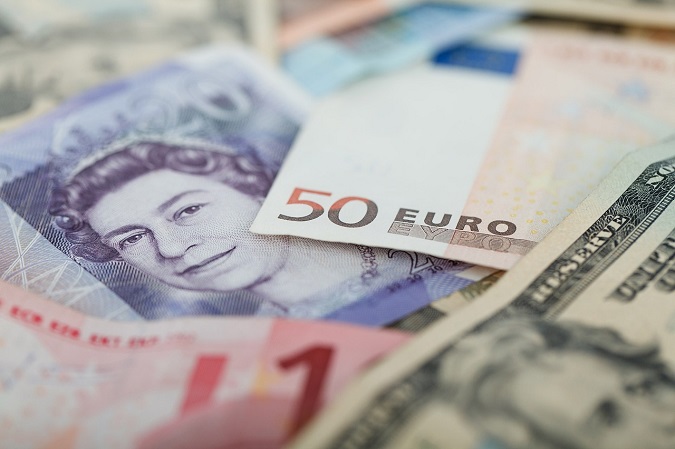After a decade when monetary policy alignment dampened currency movements, in 2022 currency was important once again. Whether it was the strong dollar, the weak yen or volatile sterling, currency was, in many cases, a more important determinant of returns than the performance of individual companies. Could a normalisation of these trades provide opportunities in the year ahead?
Currency movements over the year were largely shaped by monetary policy. The dollar was strong because of the speed and scale of Federal Reserve interest rate rises, but also because of its reputation as a safe haven at times of crisis. The yen was weak because the Bank of Japan kept interest rates low even as the rest of the world was tightening monetary policy.
There were also idiosyncratic shifts. Sterling was on a downward trend versus the dollar, but the country’s brief flirtation with Trussonomics sent it into a tailspin. It eventually recovered some fragile equilibrium, but remains on watch for many currency investors. The Turkish lira and Nigerian naira went into freefall as inflation took hold.
The shifts among the world’s major currencies have had a meaningful impact on investor returns. The MSCI World index is down 16.8% in US dollars (source: MSCI, to 6 January 2023). For sterling investors, it was down just 6.6%. The MSCI Japan was down 19.2% in US dollars, but just 7.55% in local currency. The MSCI UK was up 5.3% for sterling investors and down 6.3% for dollar investors.
The strong dollar has flattered dollar earnings for many of the UK’s largest businesses, helping UK equity income investors, while acting as a drag for some of the US’s global businesses, such as Apple.
The first question for the year ahead is whether the dollar will continue its strength. Sterling, euro and yen started to appreciate versus the dollar from September onwards as UK, European and Japanese central banks have caught up on rates. Equally, as the likely trajectory of interest rates and inflation has become clearer, risk aversion has abated, which has also weakened demand for the dollar.
Virginie Maisonneuve, chief investment officer, global equities at Allianz Global Investors, says: “The dollar will not fall sharply because there is still a rate cushion. Rates are still increasing, but more slowly…. We don’t believe the dollar will collapse and it should remain a strong currency. However, it could weaken versus other currencies depending on their domestic situation.
“When the dollar went up, that was the driving force. The tightening was fastest in the US. From here, there may be a non-symmetrical adjustment of currencies against the dollar depending on their domestic factors.”
Nowhere is this clearer than with the yen. After double-digit falls versus the dollar in 2022, the Bank of Japan reversed its long-standing policy on yield curve control in December. Frédérique Carrier, head of investment strategy for RBC Wealth Management in the British Isles and Asia, says: “In effect, (this) enabled the Japanese 10-year bond yield to reach 0.50% (previous cap 0.25%). Markets did not expect such a move so soon.
“After the policy announcement, the yen, which had been chronically weak for most of 2022 due to the BoJ ultra-accommodative policy, surged by close to 4%, achieving its largest daily gain against the US dollar this century.”
Maisonneuve agrees this could be important in the year ahead: investors in Japan can have a yield once again. She also points out that Japan is the largest US treasury holder and one of the largest creditors to the world: “We believe the yen will continue to appreciate versus the dollar as capital is repatriated.”
For sterling investors, there are no obvious catalysts for a shift in the dollar exchange rate. The UK continues to battle with a balance of payments problem, and weak foreign investment. It has, arguably, been a structural bear market versus the dollar for decades. However, on most measures, including purchasing power parity, sterling looks cheap. In the end, it may be dollar weakness, rather than sterling strength that shifts the balance between the two currencies.
Bill Dinning, chief investment officer, Waverton Investment Management, believes that the euro/sterling exchange rate may be a more important one to watch over the near term: “Sterling has been incredibly stable versus the euro since the Brexit referendum. Everyone is focused on sterling/dollar, but the dollar has been strong against most other currencies. If investors are pessimistic about the UK, believing it is in more of a mess than its peers, it will show up in sterling/euro. If it gets down to 1.08, it may be indicative of genuine concern about the UK.”
He believes a weaker dollar looks likely in the year ahead and could catalyse a period when markets outside the US do better, particularly as investors start to anticipate recovery: “The weaker dollar could be a very important theme if it continues.” The weaker dollar could be helpful for the reflation story in 2023 and helpful for encouraging portfolio flows out of dollars.
Carrier agrees and says other countries may benefit too: “The yen’s move adds credence to the widely held view, including our own, that the US dollar’s strength would likely wane over 2023. This, in turn, could remove an important headwind to emerging economies which typically suffer from a strong.”
The macroeconomic landscape looks more settled in the year ahead, even if recession is still looming for many countries. This should see some of the more extreme currency trades experienced in 2022 normalise. This could provide a significant tailwind for investors in specific assets over the year ahead.







